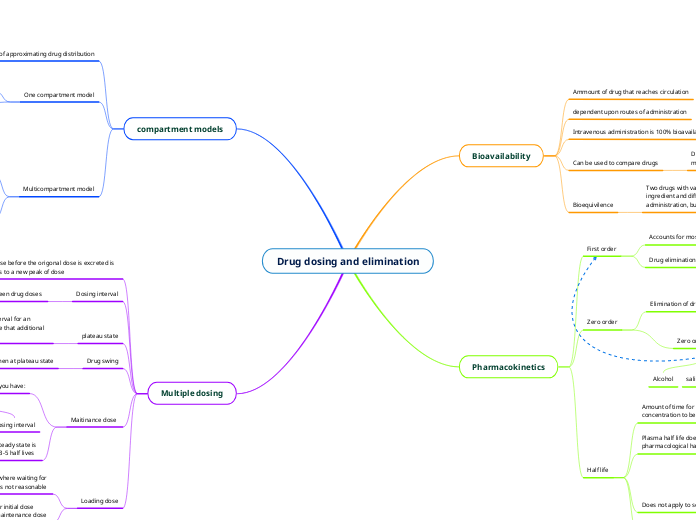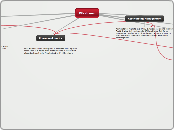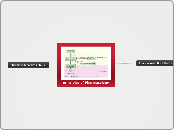Drug dosing and elimination
Multiple dosing
Loading dose
Administering a larger initial dose
followed by smaller maintenance dose
In instances where waiting for
steady state is not reasonable
Maitinance dose
Practically, a steady state is
reached after 3-5 half lives
Can be solved for if you have:
Max concentration
Drug swing
Peak dose minus trough dose when at plateau state
plateau state
After giving the same dose over the same interval for an amount of time, there will be a maximum dose that additional doses will not peak above
Dosing interval
a consistent time period between drug doses
adding additional dose before the origonal dose is excreted is cumulative and leads to a new peak of dose
compartment models
Multicompartment model
For many drugs 2 compartments is sufficient
Second compartment is the rest of the body
Can group together key organs
Used to account for distribution phase
modeling every organ is unrerasonable
One compartment model
Used for:
Aminoglycosides
Antibacterial drugs
Assumes drug is freely
distributed and eliminated
A method of approximating drug distribution
Pharmacokinetics
Half life
Rate constant can be calculated for a drug
Does not apply to second order drugs
Plasma half life does not always equal
pharmacological half life
Some things that can cause discrepency
DNA damaging drugs
Irreversible receptor binding
Amount of time for half of initial
concentration to be cleared
Constant time irrespective of
initial concentration
Zero order
Zero order drugs
Phenytoin
salicylate
Alcohol
Elimination of drug is constant
Some first order drugs at high concentrations
function as zero order drugs
irrespective of drug concentration
First order
Drug elimination dependent on concentration
Constant percentage of drug eliminated
Accounts for most drugs
Bioavailability
Bioequivilence
Two drugs with varying concentration of the same therapeutic ingredient and different routes of
administration, but same bioavailability
Can be used to compare drugs
Drugs with the same route of administration and
mechanism can compare efficiency by bioavailability
Intravenous administration is 100% bioavailable
dependent upon routes of administration
Ammount of drug that reaches circulation









